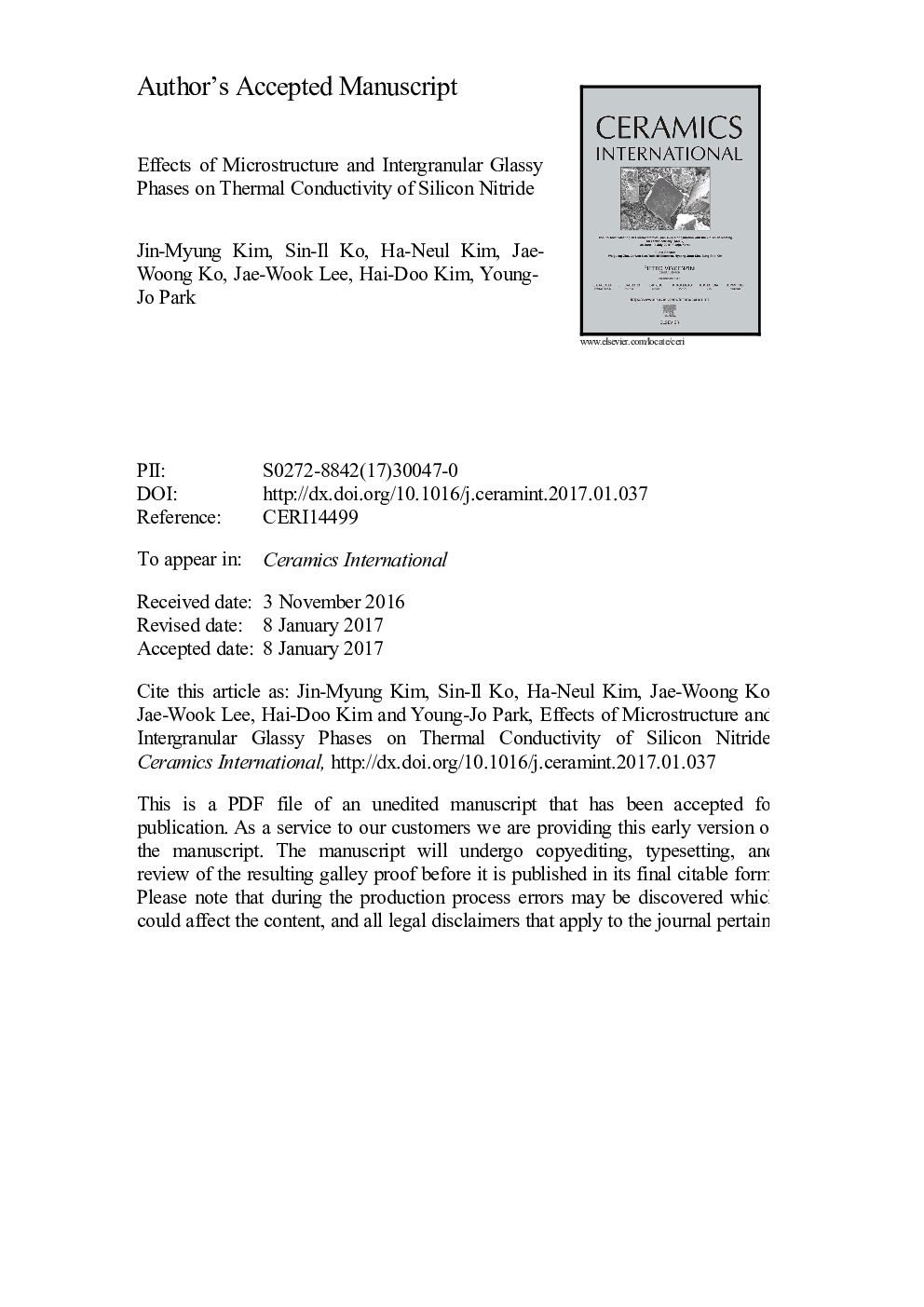| Article ID | Journal | Published Year | Pages | File Type |
|---|---|---|---|---|
| 5437545 | Ceramics International | 2017 | 33 Pages |
Abstract
In this study, the binary sintering additives Y2O3-Sc2O3, were first applied to the Si3N4 system to investigate their effects on microstructure and thermal conductivity. The microstructure and thermal conductivity of both sintered silicon nitride (SSN) and sintered reaction-bonded silicon nitride (SRBSN) were found to be significantly dependent on the additive composition. Among various combinations of Y2O3 and Sc2O3, 1Â mol% Y2O3â3Â mol% Sc2O3 prominently enhanced thermal conductivity, and the enhancement could not be attributed to any difference in microstructure or lattice defects. TEM observation revealed that this composition was more liable to devitrify the glassy phase with a lower degree of stress accumulation, and to possibly produce a grain boundary that was cleaner or with a higher order of atomic arrangement. A microstructure model for thermal conductivity was proposed which took the thermal resistance of the grain boundaries into account. The grain boundary state exerted a remarkable influence on the thermal conductivity of fine microstructures, and the experimentally measured thermal conductivity values were consistent with those given by the proposed model.
Related Topics
Physical Sciences and Engineering
Materials Science
Ceramics and Composites
Authors
Jin-Myung Kim, Sin-Il Ko, Ha-Neul Kim, Jae-Woong Ko, Jae-Wook Lee, Hai-Doo Kim, Young-Jo Park,
